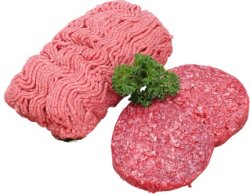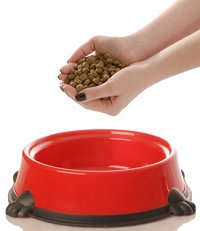English Bulldogs are adorable, grumpy-looking, dogs that make for entertaining, fun, and loving family pets. He has a great disposition, even in spite of his natural stubbornness, and are loyal to a fault.
Unfortunately, the English Bulldog is very susceptible to a wide variety of canine health conditions and deals with more health issues than your average pup. This dog will require a lot of special attention and care throughout his life. If you’re considering getting one, please read through this list of English Bulldog health problems to get familiar with the many conditions you should be prepared to encounter.
We should note that not all English Bulldogs will get many of these conditions, but they are very susceptible to them, so it’s important to be aware just in case. Below is a complete guide to English Bulldog health issues and what you can do as an owner to keep your pup healthy.
Why Do English Bulldogs Have Health Problems?
Many of the English Bulldog’s health problems encountered by today’s breed is the result of human interference, meaning because of selective breeding. Sadly, many veterinarians think that the English Bulldog is the most deformed of all breeds. Breeders chose to alter the look of the original Bulldog, to make them have more smashed faces, smaller bodies, and oversized heads. This has produced the goofy, awkwardly proportioned English Bulldog we know today.
Brachycephalic Syndrome
Because of their short face, an English Bulldog will suffer to some degree from a condition called brachycephalic syndrome (full name Brachycephalic Airway Obstructive Syndrome or BAOS), which can cause all sorts of health problems for your dog. This breed’s respiratory system is very fragile as a result.
As for the long name, “brachy” means shortened” while “cephalic” refers to the head. Unfortunately, this condition is a direct result of the breeding practices mentioned above.
The breeding has caused their skull bones to push in, giving their face that shortened appearance. This has altered the Bulldog anatomy and changed the relationship between their facial bones and soft tissue structures.
The compressed nasal passage has created slightly crushed nostrils and a smaller trachea. This causes pressure in the animal’s airway, which makes this breed have to work harder to breathe. It also contributes to the well-known and somewhat beloved Bulldog trait of snoring.
This means your English Bulldog will struggle to breathe in hot or humid weather conditions, and many can’t run without gasping for air. He may even seem to be breathing uncomfortably, or panting and snorting all the time, regardless of his activity.
Some English Bulldogs may even have difficulty eating. In addition, canine obesity is another condition these dogs are very susceptible to and it only worsens a Bulldog’s breathing issues. This is why a healthy diet and moderate exercise are extremely important.
Because of brachycephalic syndrome, your English Bulldog should be kept in an air-conditioned home and closely supervised during any strenuous activity, especially when it is hot outside. In fact, you shouldn’t allow your dog to exert himself outside when it is hot, just to be safe.
Dysplasia & Orthopedic Deformities
The English Bulldogs abnormal build is the result of centuries of breeding and is actually a structural defect called chondrodysplasia. This condition predisposes English Bulldogs to bone and joint problems, such as canine hip dysplasia and elbow dysplasia. In fact, according to the Orthopedic Foundation of America, the English Bulldog has the highest incidence of hip dysplasia of all breeds of dog. A whopping 72 percent of all English Bulldogs are dysplastic. Nearly 35 percent also have canine elbow dysplasia, and some may also have loose knees and shoulders.
When an animal has dysplasia, it means that a bone does not fit snugly into the joint. You will need to get your dog X-Rays to check for the condition, which can be inherited and detected while he is still s puppy.
Dysplasia in any joint can cause pain, lameness, make your dog reluctant to run, jump, or climb stairs, decrease his already limited activity, and even have difficulty just getting up. Generally, he should not encounter secondary symptoms unless he has become overweight, or are overworked during his period of rapid growth when he is a puppy.
English Bulldogs are also susceptible to canine intervertebral disk disease, cruciate ligament rupture, and hemivertebra. These are all conditions and symptoms that can be helped by keeping your English Bulldog at a healthy weight. Obesity will make any joint condition worse, so make sure to give your dog regular walks and an appropriate diet.
Skin Conditions
Because of the English Bulldog’s loose skin and folds, these animals are susceptible to a wide variety of skin conditions.
Dermatitis
Dermatitis is a condition directly related to an English Bulldog’s skin folds. The skin rubs and traps in moisture in the areas around the dog’s tail, lips and facial folds. To prevent dermatitis in dogs, which is a buildup of bacterial growth, you should clean out your Bulldog’s skin folds daily.
If your dog does encounter dermatitis, you should be able to easily identify it yourself, as the area will lose its fair, become reddened (hot spots), or develop a bad smell.
Facial Acne Or Eczema
Because of their short snout, an English Bulldog has to bury their face in things in order to smell them.
Because of this, this breed is prone to getting pimples and eczema on their face and chin. They can also develop pimples if you are using a plastic food or water bowl because bacteria can collect in the scratches of the dish. These should be easy to clear up with some antibiotic ointment.
Demodectic Mange
This condition, also called Demodicosis, is one all dogs encounter. Canine demodectic mange is very common because all dogs carry a demodex mite that is passed to them from their mother in the early days of life. This mite lives in a dog’s hair follicles and typically won’t cause any problems, but if your English Bulldog has a weakened immune system, he can develop demodectic mange.
This will manifest as patches of red, scaly skin where the dog will lose hair, typically occurring on the dog’s head, neck and front legs. It generally only occurs while your dog is still a puppy, and should pass in time on its own, but if not, see your veterinarian for an opinion.
Head Shakes
This is a troubling condition in which a dog will involuntarily shake his head either side to side or up and down. The shaking can sometimes be fairly violent, and look like a canine seizure, and the dog will seem to be conscious and aware of what is happening. If this occurs, you should take your dog to the vet immediately. While it may just be the result of stress or low blood sugar, it could be related to something much more serious and your dog might be in some pain.
Patellar Luxation
Patellar luxation is a common condition in smaller dogs in which the femur (thigh bone), patella (kneecap), and tibia (calf bone) do not line up properly. This will cause lameness in the affected leg or an abnormal gait, making the dog appear to skip or hop. Sadly, it is a condition that will be present at birth, although it may not actually appear until much later in life.
The rubbing of the joints can also lead to canine inflammatory arthritis. Most often, the condition will be minor, but if it reaches a grade IV severity, a dog will require surgical correction in order to walk properly. Patellar luxation is the condition that gives English Bulldogs their bow legged appearance.
Eye Conditions
Among the many English Bulldog health problems is a few conditions affecting the dog’s eyes, the most common of which is cherry eye. Bulldogs may also develop dry eye, corneal ulcers, eyelid and eyelash abnormalities, and persistent pupillary membranes. You may even see cataracts in a Bulldog as early as one to two years old.
Cherry Eye
Cherry eye in dogs is a common condition affecting English Bulldogs in which the gland that normally resides under the dog’s lower eyelid will sometimes pop out at the inside corner of the eye. In other words, the dog’s third eyelid gland becomes prolapsed.
This is most often seen in English Bulldog puppies, and is not an emergency situation, but is something that requires treatment early so it doesn’t develop into a more serious eye condition.
This allows for treatment to be done without removing the gland, which can lead to another condition known as “dry eye.”
Dry Eye
If a dog’s gland must be removed to treat cherry eye, it will cause dry eye symptoms, which will cause your dog to require ointment to keep his eyes moist for the rest of his life.
Without a gland, your dog will have no natural tear produc on, and will be a high-maintenance condition that you will have to treat.
Entropion & Ectropion
These conditions affect a dog’s eyelids. In canine Entropion, the eyelid rolls inward toward the eye, while ectropion refers to a droopy eyelid. Both can be a nuisance to the dog but do not present a threat to his vision in most cases. However, sometimes it can be so irritating that your pup may require surgery to correct.
Interdigital Cysts
This is a condition that affects a dog’s toes. It appears as a red swelling between a dog’s toes, and can generally be cleared up with some simple cleaning. However, too much treatment can actually make the condition worse. It affects many Bulldogs but is not serious.
Hypothyroidism
Hypothyroidism is becoming more common in English Bulldogs and is a condition in which the hypothyroid gland isn’t producing enough hormones to keep a dog’s body functioning properly. Low thyroid levels can be a serious problem in any animal. The hypothyroid gland is in the dog’s neck, and is often directly affected by the loose skin and fat rolls that populate there due to the bulldog’s strange build. Obesity can cause hypothyroidism as well.
Other Health Conditions
Some other health conditions that English Bulldogs have been known to encounter include bloating, a blood-clotting disease known as Von Willebrand’s, inherited deafness, urinary problems, canine kidney disease, heart disease, and more.
Prevention Of English Bulldog Health Problems
Overall, an English Bulldog can be a wonderful dog, but this breed does come with the potential for a lot of health problems. As an owner, you’ll need to monitor his health closely.
The first preventative measure you can do, if you can help it, is to purchase your dog from a reputable breeder. This should ensure that you are getting the healthiest Bulldog possible.
Breeders should have their puppies vaccinated and dewormed before you take them home and only use healthy and mature dogs for breeding.
Their dogs should have certifications from the Orthopedic Foundation for Animals for their hips, elbow, and knees, as well as from the Canine Eye Registry Foundation (CERF), to confirm that their eyes are normal.
These certifications ensure that a breeder is using healthy breeding practices, and is not breeding with young dogs since the clearances aren’t issued to dogs younger than two years old.
This is a standard because some health problems don’t appear until a dog is fully mature. This doesn’t mean your English Bulldog won’t inherit any health conditions, but it puts him at less of a risk.
Beyond using a reputable breeder, you can do your part once you take your dog home by being proactive. Check your dog daily for any skin conditions, clean his folds, and make sure he’s eating right. Obesity is a contributing factor to many of the conditions listed above and will, at the very least, make him much worse. Feed your dog a healthy diet, give him enough exercise, and pay attention to his behavior, so you can bring him to the vet if you notice he isn’t acting right.











